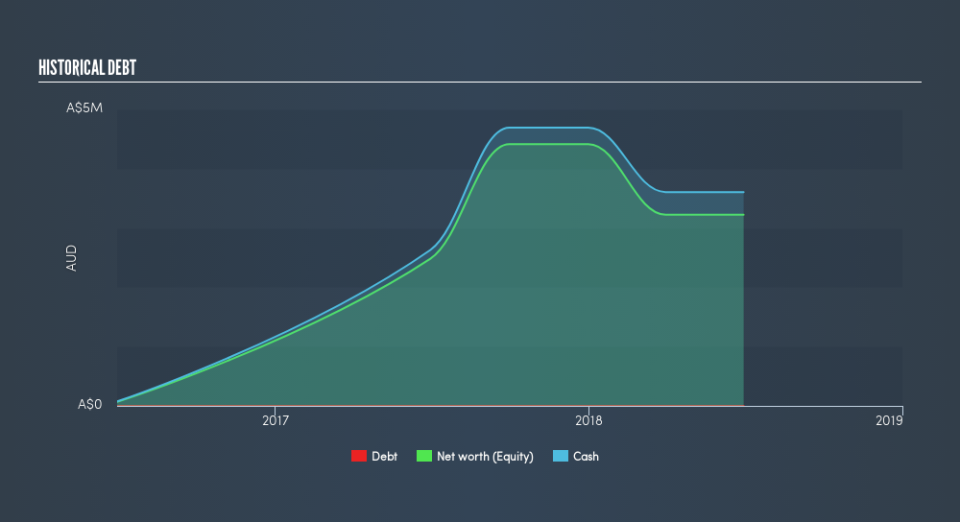What Investors Should Know About PainChek Ltd.’s (ASX:PCK) Financial Strength

Want to participate in a short research study? Help shape the future of investing tools and receive a $20 prize!
Zero-debt allows substantial financial flexibility, especially for small-cap companies like PainChek Ltd. (ASX:PCK), as the company does not have to adhere to strict debt covenants. However, it also faces higher cost of capital given interest cost is generally lower than equity. While PCK has no debt on its balance sheet, it doesn’t necessarily mean it exhibits financial strength. I recommend you look at the following hurdles to assess PCK’s financial health.
View our latest analysis for PainChek
Is PCK right in choosing financial flexibility over lower cost of capital?
There are well-known benefits of including debt in capital structure, primarily a lower cost of capital. Though, the trade-offs are that lenders require stricter capital management requirements, in addition to having a higher claim on company assets relative to shareholders. The lack of debt on PCK’s balance sheet may be because it does not have access to cheap capital, or it may believe this trade-off is not worth it. Choosing financial flexibility over capital returns make sense if PCK is a high-growth company. PCK’s revenue growth over the past year is an impressively high double-digit 63%. Therefore, the company’s decision to choose financial flexibility is justified as it may need headroom to borrow in the future to sustain high growth.
Does PCK’s liquid assets cover its short-term commitments?
Given zero long-term debt on its balance sheet, PainChek has no solvency issues, which is used to describe the company’s ability to meet its long-term obligations. However, another measure of financial health is its short-term obligations, which is known as liquidity. These include payments to suppliers, employees and other stakeholders. With current liabilities at AU$448k, it appears that the company has been able to meet these commitments with a current assets level of AU$3.7m, leading to a 8.19x current account ratio. However, a ratio above 3x may be considered excessive by some investors.
Next Steps:
PCK is a fast-growing firm, which supports having have zero-debt and financial freedom to continue to ramp up growth. This may mean this is an optimal capital structure for the business, given that it is also meeting its short-term commitment. In the future, its financial position may change. Keep in mind I haven’t considered other factors such as how PCK has been performing in the past. I suggest you continue to research PainChek to get a more holistic view of the stock by looking at:
Historical Performance: What has PCK’s returns been like over the past? Go into more detail in the past track record analysis and take a look at the free visual representations of our analysis for more clarity.
Other High-Performing Stocks: Are there other stocks that provide better prospects with proven track records? Explore our free list of these great stocks here.
We aim to bring you long-term focused research analysis driven by fundamental data. Note that our analysis may not factor in the latest price-sensitive company announcements or qualitative material.
If you spot an error that warrants correction, please contact the editor at editorial-team@simplywallst.com. This article by Simply Wall St is general in nature. It does not constitute a recommendation to buy or sell any stock, and does not take account of your objectives, or your financial situation. Simply Wall St has no position in the stocks mentioned. Thank you for reading.

 Yahoo Finance
Yahoo Finance 
